

Readingrockets. Click the "References" link above to hide these references.
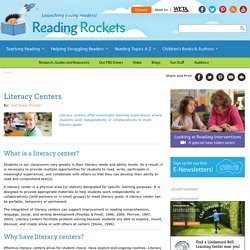
Daniels, H., & Bizar, M. (1998). Methods that matter: Six structures for best practice classrooms. York, ME: Stenhouse Publishers. Fountas, I., & Pinnell, G. (1996). Guided reading: Good first teaching for all children (grades K-2). Fountas, I., & Pinnell, G. (2000). Morrow, L. (1997). Morrow, L. (2003).Organizing and managing the language arts block: A professional development guide. Prevatte, L. (2007). 40 Ideas for K–2 Literacy Centers You're Going to Love. Having a cache of go-to literacy activities that are meaningful, flexible, and able to be completed by students independently is a teacher necessity.
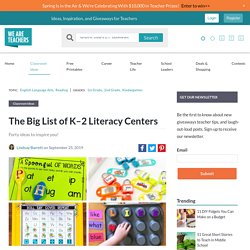
The best literacy centers build autonomy, help students practice key skills, and free you up to teach small groups or give support elsewhere. We’ve pulled together this long list so you can have plenty of simple options at your fingertips. 1. “Feed” the mini trash cans. Whether you ask students to sight words, letters, pictures or words by phonetic pattern, there’s just something about a trash can with a swinging lid that makes the task much more exciting! Source: @msbendersclassroom 2. Yes, this is an old standby, but wait … a muffin tin?! Source: @playdough2plato 3. We love this idea for recording prior and new background knowledge on a topic, but it’s easily adaptable to other comprehension strategies, too. Source: @missps_style 4. Make it a race to see which column “wins” or make it a fill-the-board challenge. Source: @theprintableprincess. Literacy Centers That Work - Learning at the Primary Pond. Search Facebook-f Pinterest-p Instagram Shopping-cart Youtube Envelope Menu Phonics Program Literacy Centers That Work September 9, 2017 Facebook Pinterest Twitter LinkedIn Email Print There are a LOT of different ways to run literacy centers.
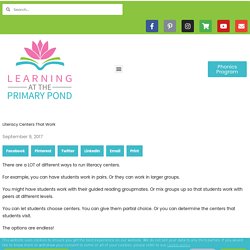
For example, you can have students work in pairs. Literacy Centers for Primary Students - Mrs. Winter's Bliss. Reading Centers for Upper Elementary. One of the most frequently asked questions I get from teachers who want to implement guided reading instruction is “What do the other students do while you are teaching guided reading?”
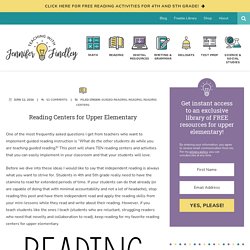
This post will share TEN reading centers and activities that you can easily implement in your classroom and that your students will love. Before we dive into these ideas I would like to say that independent reading is always what you want to strive for. Students in 4th and 5th grade really need to have the stamina to read for extended periods of time. If your students can do that already (or are capable of doing that with minimal accountability and not a lot of headache), stop reading this post and have them independent read and apply the reading skills from your mini-lessons while they read and write about their reading. As I mentioned above, independent reading time is very important for students in upper elementary. This reading center is a relatively new center option for my students. Save. Centers in Upper Elementary Classrooms. This post the three reasons why upper elementary teachers should have centers in their classroom.
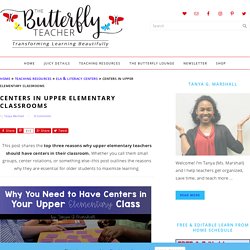
Whether you call them small groups, center rotations, or something else–this post outlines the reasons why they are essential for older students to maximize learning. This post contains affiliate links. Please see my full disclosure here. Literacy Center Resources for Upper Elementary Teachers This post is a part of a series on helpful content geared toward literacy instruction in upper elementary classrooms. Posts with * beside their titles have free downloads available! 1–Centers Maximize Differentiated Instruction/Learning One of the best ways to differentiate instruction is through the use of centers. Many assume that because students in 3rd through 5th grade are older than K-2nd, that they can digest all learning model. This assumption is false! With small groups, I am able to meet different student needs in a fun way that isn’t overwhelming.
Boy, was I wrong!?! 3–Less Teacher Stress Why? Super Teacher Worksheets - Thousands of Printable Activities.